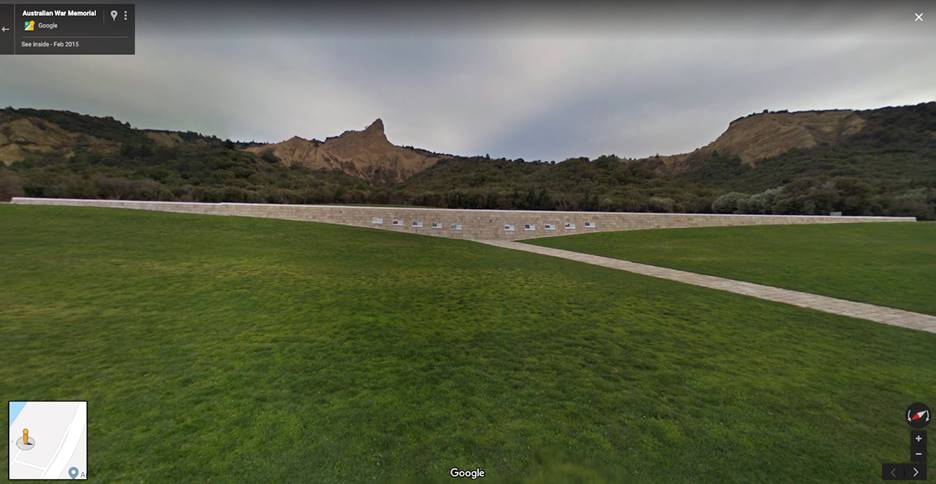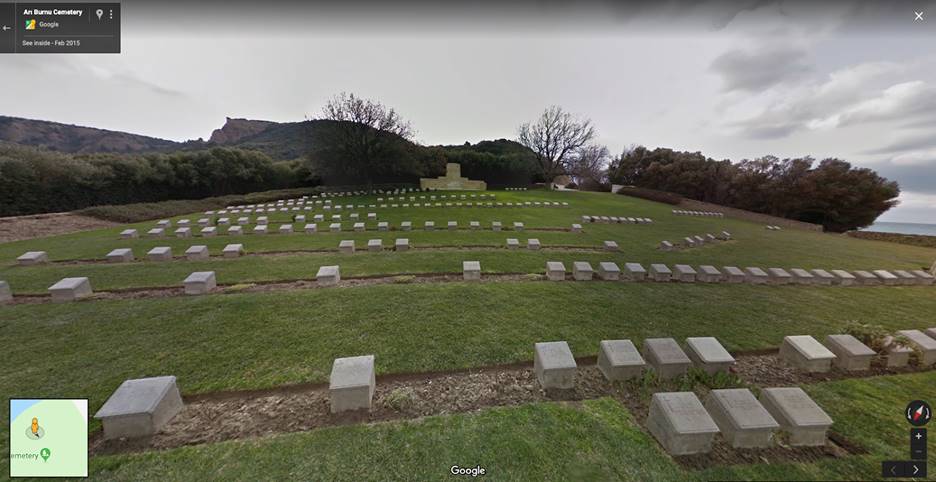For many Australians ANZAC Day is a solemn and sacrosanct day. ANZAC day commemorates the anniversary of Australia’s first major military action during the First World War. It is also an opportunity to acknowledge the service and sacrifice of all the Australian (and New Zealand) service men and women past and present during times of peace and conflict.
For many, a pilgrimage to Gallipoli to stand where our fighting men and women once stood is something they deeply want to do, but due to various reasons it is something many will never be able to experience. To commemorate ANZAC Day 2019, Google Street view can transport you to Gallipoli to a number of locations including three of the most significant sites to Australians.
- Anzac Cove: One of the best-known spots at Gallipoli for Australians. Following the landing on 25 April 1915, the beach became the main base for the Australian and New Zealand troops for the eight months of the Gallipoli campaign.

- Anzac Commemorative Site: Located just north of Ari Burnu at North Beach, this is where Australian troops and New Zealand troops came ashore some minutes after the first landings in 1915. The site was dedicated to those who served on the 85th anniversary in 2000 in a ceremony attended by Australian Prime Minister John Howard, New Zealand Prime Minister Helen Clark and the Turkish Minister of Forestry.

- Ari Burnu Cemetery: This site was used throughout the occupation and until 2000, hosted the Anzac Day Dawn Service. 182 of the 253 buried here are Australian soldiers – 82 who served with the Australian Light Horse Regiments.

For those whom a physical trip to the shores of Turkey are just not an option technology can provide an experience that previously was unimaginable. While it may be just a shadow of the experience of standing among history it’s well worth a virtual trip to appreciate just what so many gave up so much for.
For the Fallen
They shall grow not old, as we that are left grow old;
Age shall not weary them, nor the years condemn.
At the going down of the sun and in the morning
We will remember them.Laurence Binyon 1914




